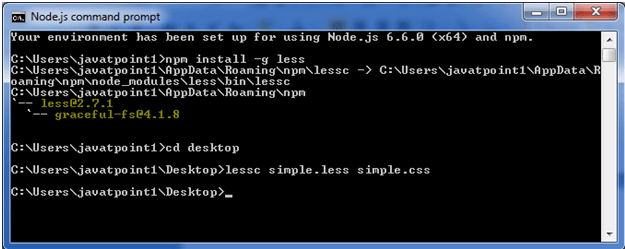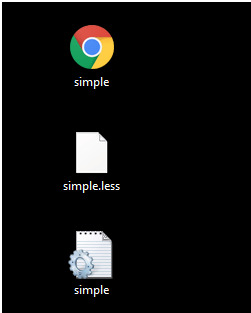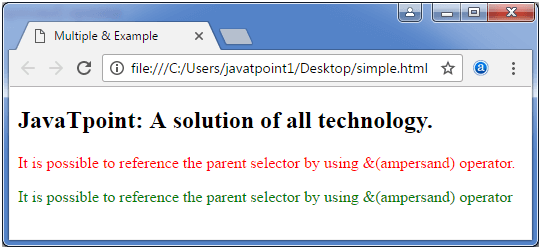In Less, the & operator is used to refer a parent selector repeatedly without using it name. So the multiple & parent selector specifies that within a selector & operator can be used more than once.
Multiple & Example
Let's take an example to demonstrate the usage of multiple & parent selectors.
Create a HTML file named "simple.html", having the following data.
strong>HTML file: simple.html
Now create a file named "simple.less". It is similar to CSS file. The only one difference is that it is saved with ".less" extension.
LESS file: simple.less
Put the both file "simple.html" and "simple.less" inside the root folder of Node.js
Now, execute the following code: lessc simple.less simple.css

This will compile the "simple.less" file. A CSS file named "simple.css" will be generated.
For example:

The generated CSS "simple.css", has the following code:
Output:




0 Comments